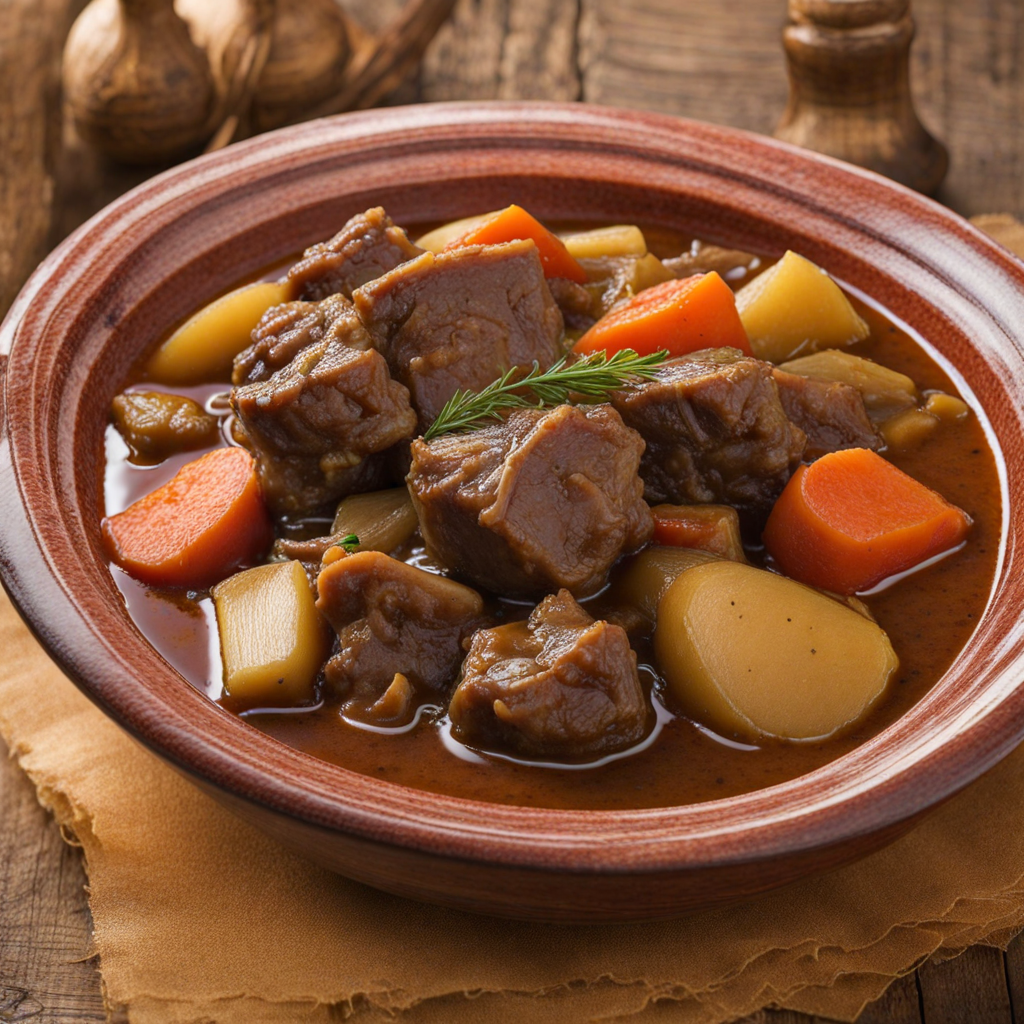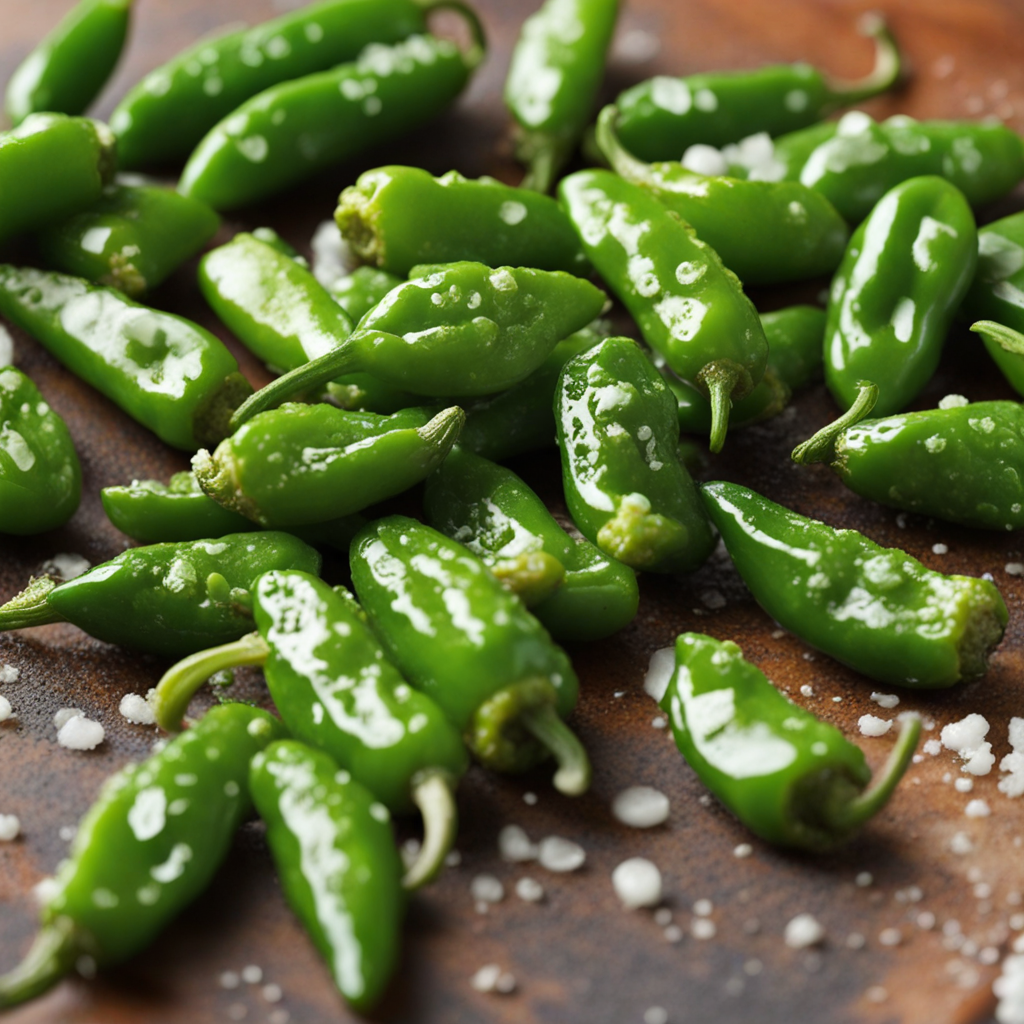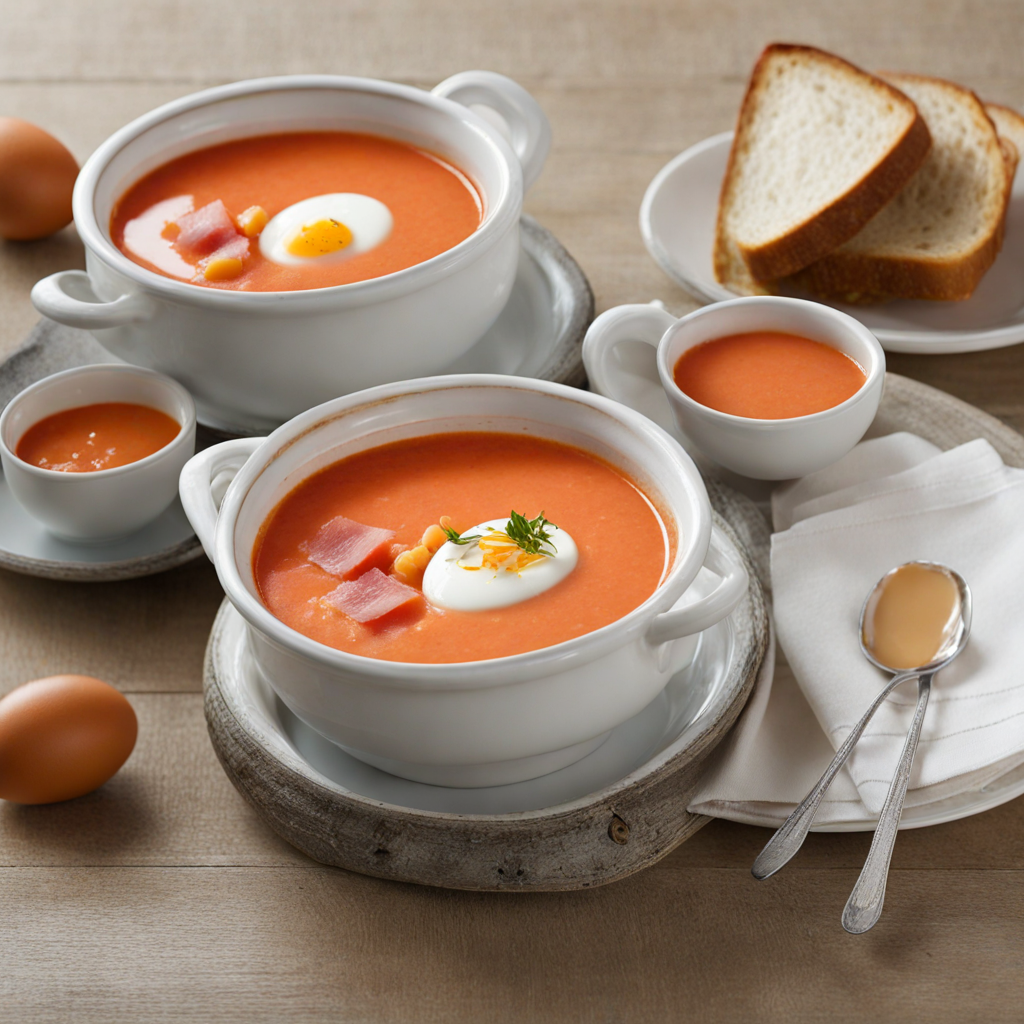Rabo de Toro
Rabo de Toro, or oxtail stew, is a traditional Spanish dish that showcases the rich culinary heritage of the country. This hearty meal features tender pieces of oxtail that are slow-cooked to perfection, allowing the connective tissues to break down and infuse the dish with deep, savory flavors. The meat is typically braised in a luscious broth, often made from red wine, tomatoes, onions, and a variety of aromatic spices, creating a robust sauce that envelops the oxtail in a warmth that is both comforting and satisfying. The cooking process involves simmering the oxtail for several hours, which not only tenderizes the meat but also allows the flavors to meld beautifully. As the dish cooks, the natural gelatin released from the oxtail enriches the sauce, giving it a silky texture that clings to each piece of meat. Traditionally served with a side of potatoes or crusty bread, Rabo de Toro is a dish that encourages sharing and savoring, making it a popular choice for family gatherings and festive occasions in Spain. In addition to its delicious taste, Rabo de Toro also reflects the essence of Spanish cuisine—simple yet bold. The dish is often accompanied by a glass of robust red wine, which complements the rich flavors of the stew. With its rustic charm and satisfying depth, Rabo de Toro is not just a meal; it is an experience that invites food lovers to indulge in the heart of Spanish culinary tradition.
How It Became This Dish
Rabo de Toro: A Culinary Tradition of Spain Origins and Historical Context Rabo de toro, or bull's tail, is a dish steeped in the rich tapestry of Spanish culinary history, with roots that stretch back to the Andalusian region where bullfighting has long been a cultural centerpiece. The dish's origins can be traced to the rural communities of southern Spain, where resourcefulness and the use of every part of the animal were essential for survival. Traditionally, bullfighting was not just a spectacle but a vital part of local culture, and the meat from the bulls that lost in the arena found a new life in the kitchens of the area. The precise origins of rabo de toro are somewhat murky, but it is generally believed to have gained prominence in the 19th century. The dish is emblematic of the slow-cooked stews that were popular among the working class, which utilized cheaper, tougher cuts of meat that required lengthy cooking to become tender and flavorful. The bull's tail, a cut that was often discarded or seen as undesirable, became a prized ingredient, and rabo de toro emerged as a beloved dish among the locals. Cultural Significance Rabo de toro is more than just a meal; it is a symbol of cultural identity and heritage within Spain. The dish embodies the philosophy of using local ingredients and traditional cooking methods, reflecting the agrarian roots of the Spanish people. In Andalusia, where the dish is most famously prepared, rabo de toro is often associated with the festivities surrounding bullfighting, particularly during events like the Feria de Abril in Seville. During these celebrations, the dish is served in taverns and restaurants, bringing people together and fostering a sense of community. As Spain underwent significant social and economic changes in the 20th century, rabo de toro remained a culinary constant. It became a staple in Spanish cuisine, celebrated not only for its rich flavors but also for its connection to Spanish traditions and customs. The dish's association with family gatherings and special occasions is still prevalent today, as it is often cooked for Sunday lunches and holiday feasts, showcasing its integral role in Spanish culture. Ingredients and Preparation The preparation of rabo de toro is a labor of love that exemplifies the slow-cooking techniques characteristic of traditional Spanish cuisine. The main ingredient, of course, is the tail of the bull, which is typically cut into sections. The dish's development begins with marinating the meat in red wine, garlic, and a mix of aromatic spices—often including bay leaves, thyme, and black pepper. This not only tenderizes the meat but also infuses it with deep flavors that complement its robust nature. Once marinated, the meat is browned in a large pot, usually made of clay or cast iron, along with onions, carrots, and sometimes tomatoes. The browning process is crucial, as it caramelizes the surface of the meat and creates a rich fond at the bottom of the pot, which will contribute to the sauce later. After achieving a golden color, a splash of sherry or red wine is added, followed by a slow simmer with stock and additional seasonings. The cooking time can vary, but it often lasts several hours, allowing the meat to become meltingly tender and the flavors to meld into a luscious sauce. Rabo de toro is traditionally served with a garnish of chopped parsley and often accompanied by a side of rice or crusty bread, which helps soak up the rich sauce. While the classic recipe remains unchanged, modern interpretations have emerged, incorporating elements from other cuisines and adapting the dish to contemporary tastes. Evolution Over Time As Spain's culinary landscape evolved throughout the 20th and into the 21st century, so too did rabo de toro. The dish began to gain recognition beyond the borders of its Andalusian roots, becoming a staple in tapas bars and restaurants across the country. Chefs started to experiment with presentation and flavor profiles, creating innovative variations while still honoring traditional techniques. The rise of Spain's culinary tourism has also played a role in the resurgence of classic dishes like rabo de toro. As visitors flocked to Spain to experience its gastronomic treasures, chefs sought to showcase regional specialties, leading to a renewed appreciation for rabo de toro both domestically and internationally. The dish has become a symbol of authentic Spanish cuisine, often featured in culinary festivals and food tours that celebrate Andalusian culture. In the realm of gastronomy, rabo de toro has also found its way onto the menus of Michelin-starred restaurants, where chefs elevate the dish with modern twists—such as serving it alongside gourmet sides or presenting it in a more refined manner. These contemporary interpretations have helped to keep the dish relevant while maintaining its roots, appealing to both traditionalists and new generations of food lovers. Conclusion Rabo de toro is a dish that encapsulates the essence of Spanish culinary tradition—rich in history, culture, and flavor. Its origins in the rural kitchens of Andalusia and its connection to the age-old practices of bullfighting reveal the deep ties between food and cultural identity in Spain. As the dish has evolved over time, it has managed to retain its significance while adapting to modern tastes and culinary trends. Today, rabo de toro stands as a testament to the enduring nature of traditional cooking, celebrating the use of local ingredients and the art of slow, thoughtful preparation. Whether enjoyed in a rustic tavern in Seville or at a fine dining establishment in Madrid, rabo de toro continues to bring people together, inviting all who partake to savor not just a meal, but a piece of Spanish heritage.
You may like
Discover local flavors from Spain







